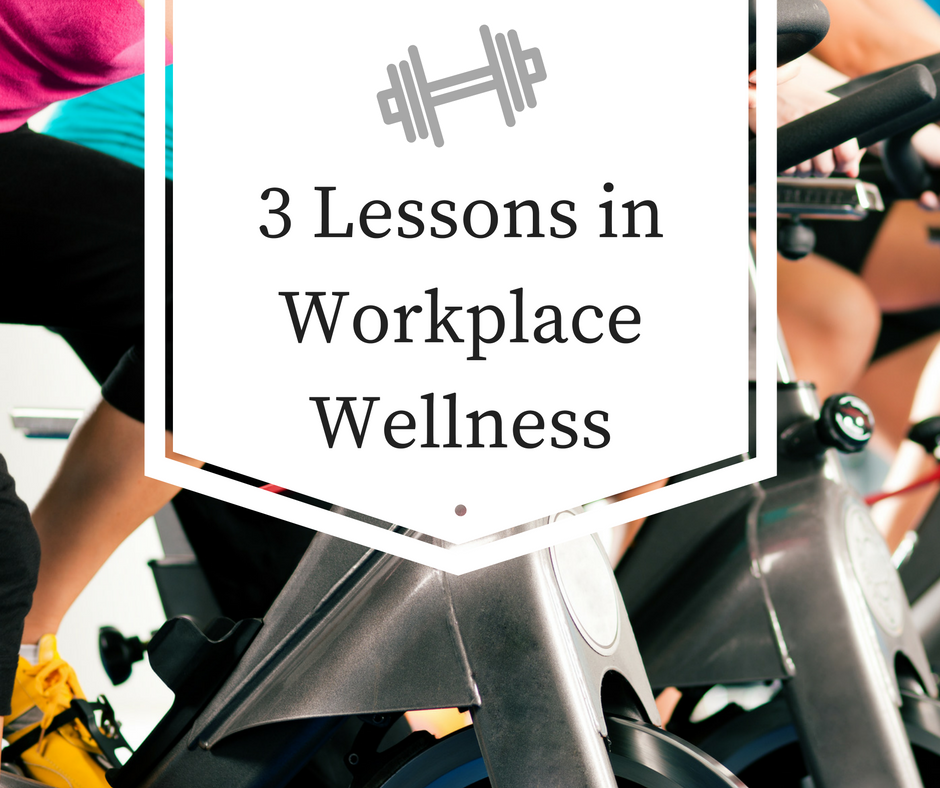At this year's annual Utah Worksite Wellness Conference, I got the opportunity to speak on one of my greatest passions: How to use the influence of wellness programs to create winning cultures at work.
In this article, I pulled out the highlights of this talk to help other business leaders find ways to build wellness into their culture.
(To watch a video of this talk, click here.)
3 Keys to Constructing a Culture of Wellness

Lesson #1: You are Not an Expert on Your Employees
Starting Nivati
One of my main goals in starting Nivati was to build a company where massage therapists could advance in their careers, get ongoing training, and really have an opportunity to move forward in their careers.
In this industry, massage therapists are often working so hard that they get injured or burnt out long before their career should be over. I wanted to create a different option for massage therapists by giving them other opportunities. That's why most of our administrative staff is made up of massage therapists that have moved up in the company.
As the company began to grow, I had ideas for a wellness package I was going to start as soon as I could.
Company Growth and Benefits
Once Nivati was profitable enough, I was excited to finally be able to offer some benefits to my employees. The first step I wanted to take was to offer health care benefits, which I thought was the mark of a truly legit business.
I got everything lined up and announced the benefit to my team.
And their response was...unenthusiastic. They told me they didn't need health insurance, because for the most part, they already had it through a spouse. So, all that work I did was ultimately a waste of my time and energy.
Where I Went Wrong
The big mistake I made was to assume I knew what my employees wanted without asking them.
If I had taken the easy step of asking them first, I could have saved myself the work of creating a benefit they didn't want. I did end up surveying my employees for what benefits they wanted and was able to give them their top 3 choices.
Lesson #2: Culture is a Direct Reflection of Leadership
Learn from the Masters
Last year, we interviewed leading companies with thriving culture and wellness programs and then reported back on what makes them so successful.
The companies we interviewed ranged in size and had a variety of wellness programs. Some were huge companies with full scale wellness services including an onsite nutritionist. Others were smaller companies that had a dedicated lunchtime fitness group.
As different as their companies looked, they all had popular, successful wellness programs.
What these companies all shared was administrative buy-in. It's one thing for employees to be interested in a wellness program at work. but without someone in a higher position to advocate for it, these programs tend to stall out.
Related: Workplace Wellness Programs: How the Leaders Do It
Like Culture, Wellness Belongs to Everyone
An effective wellness program has everyone involved. If it's only management who is driving it, but employees aren't interested, it's a failure.
On the flip side, if employees desperately want some kind of wellness program, but no one in management is supportive or advocating for it, any attempt to start something will stall out.
This is why one of the keys to great culture is that is built from values shared by the whole team. And the same goes for wellness programs. Get as many people involved in creating these programs, and you'll be pleased with the results.

Lesson #3: Forget About the ROI of Your Wellness Program
Focus on Health First
When you first start a company wellness program, don't expect to see any kind of financial returns on it for the first 2-3 years.
By focusing on employees' health for their own sake, you'll drive home the message that your workers' wellness is the first priority.
One great example of this in action comes from US Synthetics—where their focus isn't on building more widgets, or expanding into new territory, or making the biggest profits. Rather, they're focused on making their company a great place to work.
The financial returns will very likely come -- from many directions -- but it won't happen quickly. Eventually, you'll have happier, healthier employees who have more opportunities for stress reduction, fitness, and all kinds of wellness. You'll likely see a reduction in certain kinds of workplace injuries, which will mean lower workers' compensation payouts.
Related: 3 Ways to Lower Workers Comp Claims
Clarify Your Wellness Goals
In the research I've done on wellness programs, I found that there are three main health concerns that cost companies money:
- Employee Stress 75% reported that employee stress was their number one concern
- Obesity
- Sedentary lifestyles
These wellness issues cost companies money in the form of low employee focus, increased sick leave and absenteeism, more frequent workplace injuries, and even low morale caused by excessive stress.
Related: 9 Tips for Boosting Morale After Layoffs
Disclaimer
By participating in/reading the service/website/blog/email series on this website, you acknowledge that this is a personal website/blog and is for informational purposes and should not be seen as mental health care advice. You should consult with a licensed professional before you rely on this website/blog’s information. All things written on this website should not be seen as therapy treatment and should not take the place of therapy or any other health care or mental health advice. Always seek the advice of a mental health care professional or physician. The content on this blog is not meant to and does not substitute for professional medical advice, diagnosis, or treatment.







